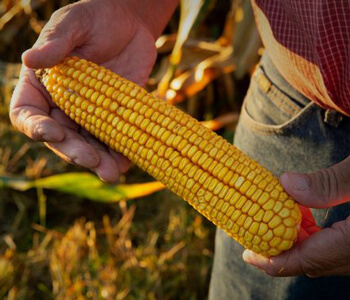What Is the Value of Your Seed?
Jan 08, 2021

By Kelly Els, Sales & Marketing Manager
What is the value of your seed? That seems like an easy question, right? It’s what you paid for it! The newer the genetics and traits in your seed, the more you pay. The older the genetics and fewer the traits, the less you pay.
These may seem like simple answers, but they relate to cost, which is only half the equation. The value of the seed is actually the profit potential in that seed. Profit potential is your bushel potential, less the cost of your seed. The cost of the seed is set before you plant, but the bushel potential is created after the seed goes in the ground.
Sounds easy again, right? To get the best bushel potential, you buy the best genetics and traits, plant and walk away. While this thought has some merit, it’s only partway there. Each variety has a certain bushel potential, and there are different factors that play into it, like planting date, plant population, rotation, fertility, disease tolerance, insect tolerance, etc.
One of our partners, WinField® United, has done extensive testing through their Answer Plot® Program to understand the yield capabilities of the brands your Key Cooperative Agronomists recommend, including DEKALB®, Brevant™, NK® Brand and CROPLAN®. They have tested and analyzed yield responses in four main areas: response to population, response to nitrogen, response to rotation and response to fungicide.
The goal is to find out which factors unlock the full yield potential of a hybrid. If you plant a particular hybrid, think about these questions:
Feel free to reach out to your local Key Cooperative Agronomist to find out how you can unlock the yield potential of your seed in 2021.
What is the value of your seed? That seems like an easy question, right? It’s what you paid for it! The newer the genetics and traits in your seed, the more you pay. The older the genetics and fewer the traits, the less you pay.
These may seem like simple answers, but they relate to cost, which is only half the equation. The value of the seed is actually the profit potential in that seed. Profit potential is your bushel potential, less the cost of your seed. The cost of the seed is set before you plant, but the bushel potential is created after the seed goes in the ground.
Sounds easy again, right? To get the best bushel potential, you buy the best genetics and traits, plant and walk away. While this thought has some merit, it’s only partway there. Each variety has a certain bushel potential, and there are different factors that play into it, like planting date, plant population, rotation, fertility, disease tolerance, insect tolerance, etc.
One of our partners, WinField® United, has done extensive testing through their Answer Plot® Program to understand the yield capabilities of the brands your Key Cooperative Agronomists recommend, including DEKALB®, Brevant™, NK® Brand and CROPLAN®. They have tested and analyzed yield responses in four main areas: response to population, response to nitrogen, response to rotation and response to fungicide.
The goal is to find out which factors unlock the full yield potential of a hybrid. If you plant a particular hybrid, think about these questions:
- Do you need to push the population?
- Do you need to push the nitrogen?
- Do you need to plant it in first-year corn?
- Do you need to apply a fungicide?
- Response to Population • Average response = 8.5 bushels • Range of responses = 0.84?21.9 bushels
- Response to Nitrogen • Average response = 66.7 bushels • Range of responses = 30.8?104.9 bushels
- Response to Corn-on-Corn • Average response = 14.4 bushels • Range of responses = 5.8?36.7 bushels
- Response to Fungicide • Average response = 14.3 bushels • Range of responses = 5.6?40.4 bushels
Feel free to reach out to your local Key Cooperative Agronomist to find out how you can unlock the yield potential of your seed in 2021.